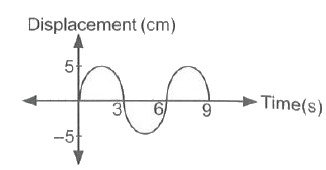Assertion : Our ears cannot distinguish two notes,one produced by a violin and other by a sitar, if they have exactly the same intensity and same frequency
Reason:When a musical instrument is played it produces a fundamental note which is accompanied by number of overtones called harmonics
Assertion is true,Reason is true, Reason is a correct explanation for Assertion
Assertion is True Reason is True : Reason is not a correct explanation for Assertion
Assertion is True ,Reason is False
Assertion is False but , Reason is True
The correct Answer is:D
Step by step video, text & image solution for Assertion : Our ears cannot distinguish two notes,one produced by a violin and other by a sitar, if they have exactly the same intensity and same frequency Reason:When a musical instrument is played it produces a fundamental note which is accompanied by number of overtones called harmonics by Physics experts to help you in doubts & scoring excellent marks in Class 12 exams.
Topper's Solved these Questions
Similar Questions
A violin and a sitar may have the same frequency, yet we can distinguish between their notes. Why ?
View SolutionThe following figure shows the displacement time graph for a sound wave produced by an instrument.

Which graph can be obtained when another muscial instrument produces a note of the same pitch but of a different quality ?View Solution
Knowledge Check
- Question 1 - Select One
Assertion: Our ears cannot distinguish two notes, one produced by a viloin and other by a sitar, if they have exactly the same intensity and the same frequeucny.
Reason: When a musical instrument is played, if produces a fundamental note which is accompanied by a number of overtones called harmonics.AAssertion is True, Reason is True, Reason is a correct explanation for AssertionBAssertion is True, Reason is True, Reason is not a correct explanation for AssertionCAssertion is True, Reason is FalseDAssertion is False but, Reason is True. - Question 2 - Select One
Two identical wires have the same fundamental frequency of 400 Hz . when kept under the same tension. If the tension in one wire is increased by 2% the number of beats produced will be
A4B2C8D1 - Question 3 - Select One
Name the characteristic of sound which can distinguish between the 'notes' (musical sounds) played on a flute and a sitar (both the notes having the same pitch and loundness).
AamplitudeBtimbreCbothDnone
Two narrow cylindrical pipes AandB have the same length . Pipe A is open at both ends and is filled with a monoatomic gas of molar mass MA. Pipe B is open at one end and closed at the other end and is filled with a diatomic gas of molar mass MB. Both gases are at the same temperature .
a. If the frequency to the second harmonic of the fundamental mode in pipe A is equal to the frequency of the third harmonic of the fundamental mode in pipe B, determine the value of MA/MB.
b. Now the open end of pipe B is also closed ( so that pipe B is closed at both ends ). Find the ratio of the fundamental frequency in pipe A to that in pipe B.View SolutionA tube closed at one end produces a fundamnetal note of frequency 480 Hz. If the same tube is kept open at both the ends, the fundamental frequency that can be excited is
View SolutionTwo identical wires have a fundamental frequency of 100Hz, when kept under the same tension . If the tension of one of the wires is increased by 21% , the number of beats produced is
View SolutionAssertion (A) : Rama Raju loves listening to Carnatic music played on Mridangam whereas his daughter Neeta gets irritated by it.
Reason (R) : The sound that produces pleasant effect on our ears is called music and the sound that produces an unpleasant effect on our ears is called noise.View SolutionWhen beats are produced by two progressive waves of nearly the same frequency, which one of the following if correct?
View Solution

